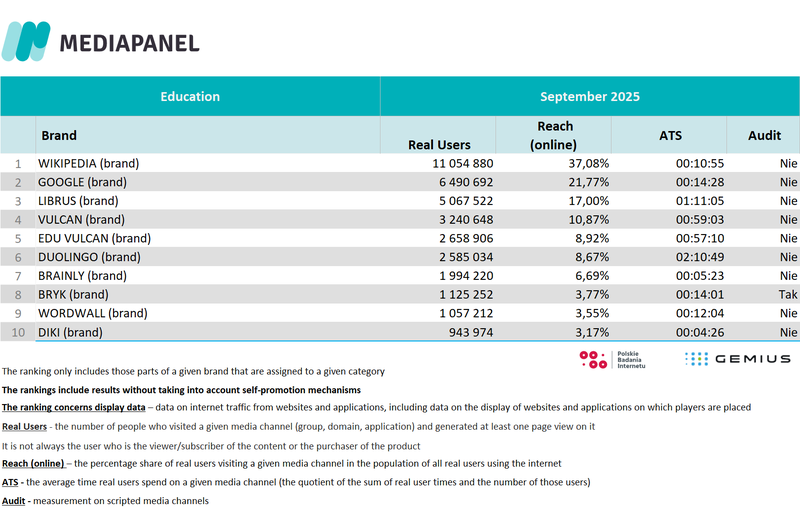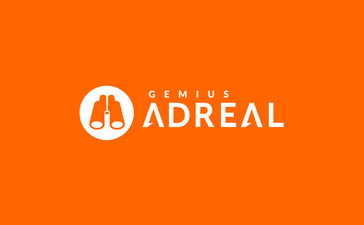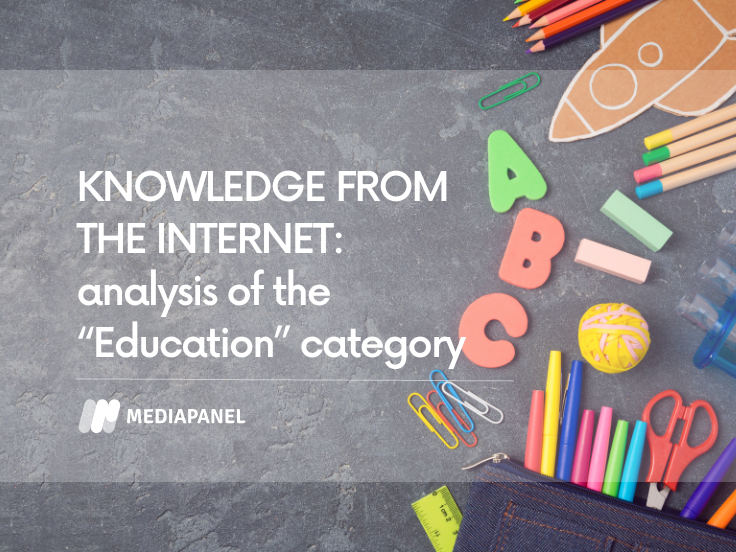
Knowledge from the internet – analysis of the ‘Education’ category
The analysis covered websites and applications in the ‘Education’ category, taking into account data for the period from October 2023 to September 2025. In July 2025, the Mediapanel survey implemented the JAR Flex method, which may affect the results and should be taken into account when interpreting them.
Seasonality in journals and knowledge bases, general decline in interest in the category
We observe sharp declines across the entire ‘Education’ category during the holiday period – July and August. These are mainly caused by a decrease in the number of users of electronic diaries, as well as knowledge bases, cheat sheet websites and task compendiums. Other types of websites enjoy similar interest from internet users throughout the year, although the overall trend is downward. This may be related to the growing popularity of AI tools, which have the potential to gradually replace various types of educational websites. Summer declines are observed both in terms of the number of RU and the time users spend browsing content in this category.
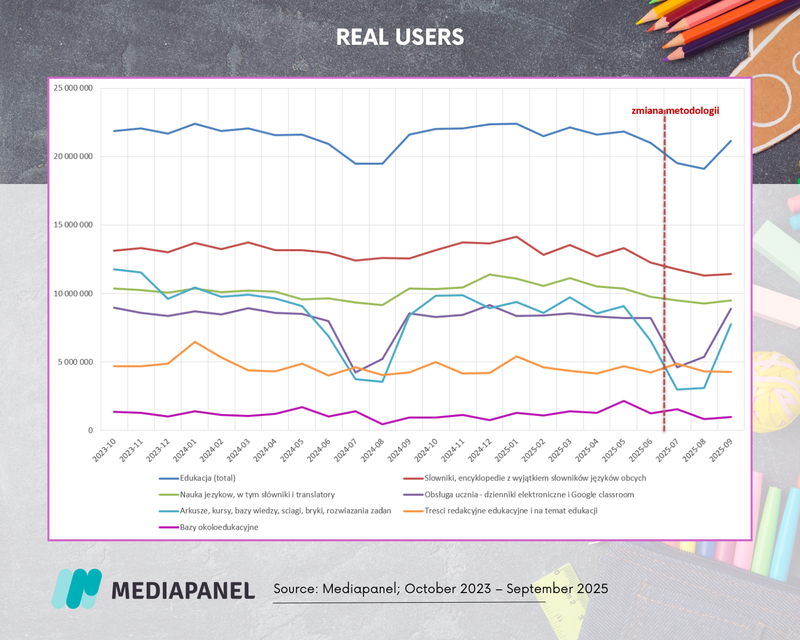
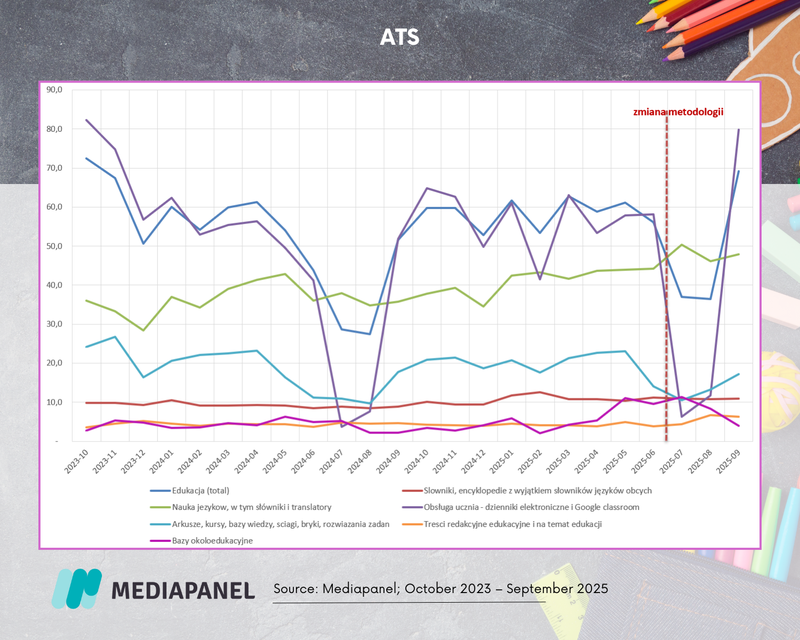
Who uses educational websites?
Women predominate on all types of websites and in all types of applications. In most cases, they are also more active consumers of the content posted there, as evidenced by the longer time spent on websites and applications in this category. The greatest predominance of female internet users can be seen in the case of online newspapers – women not only account for nearly 65% of their users, but also account for almost 73% of the time spent in this group of websites and applications. Men, on the other hand, are more active when it comes to dictionaries and encyclopaedias: although their share among users of these services does not exceed 50%, they generate 66.7% of the time spent on them.
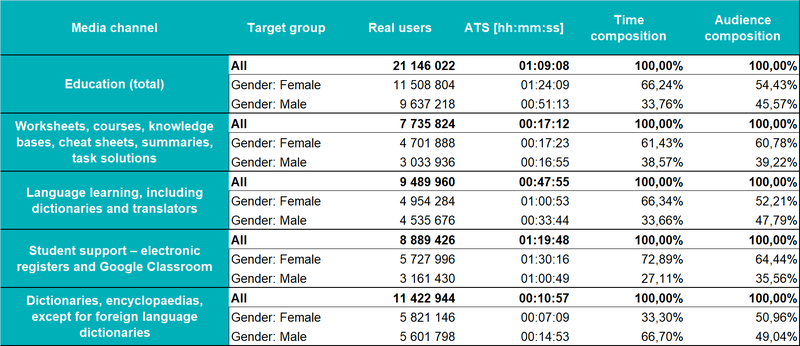
Source: Mediapanel, September 2025
The oldest users involved in language learning
An analysis of age groups reveals differences in the way educational content is consumed by users from different generations. While the activity of school-age internet users on websites offering cheat sheets and study guides is obvious (nearly 37% of users are under 19 years of age, accounting for almost 55% of the total time spent on such websites), the popularity of language websites and applications among the oldest users is noteworthy. Internet users aged 55-75 account for nearly a quarter of all users of foreign language websites, and they also account for 36.5% of the total time spent on them.
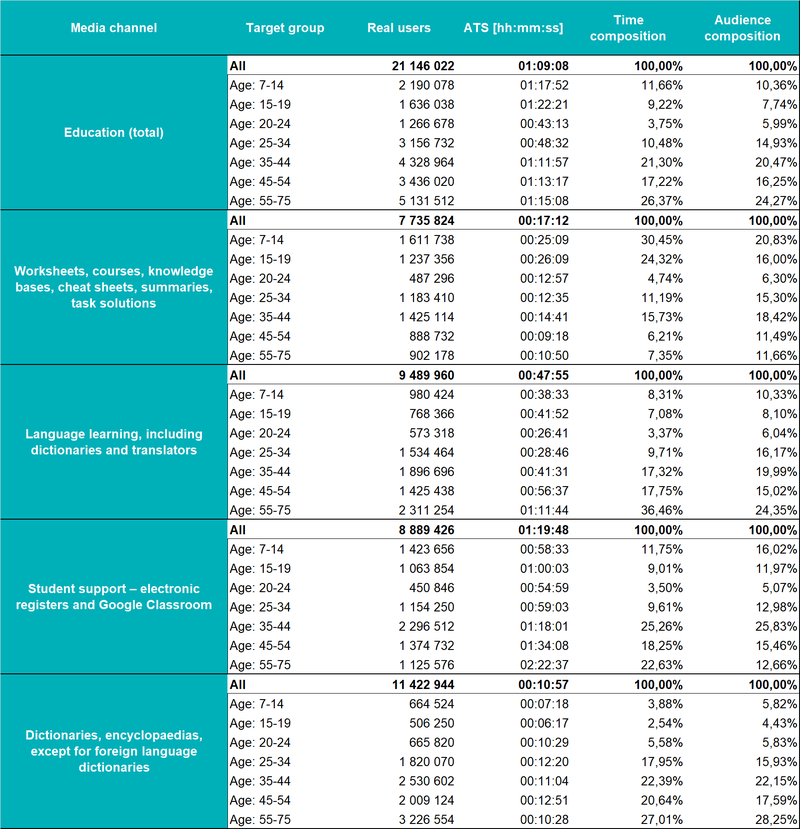
Source: Mediapanel, September 2025
Electronic registers and Wikipedia – top 10 brands in the education category
In September 2025, Wikipedia was the most popular brand in the ‘Education’ category, but online newspapers are also strongly represented in the top 10. The popular language learning app Duolingo stands out from other brands. It is the only service in the top 10 with a usage time of 2 hours and almost 11 minutes per month per user.
